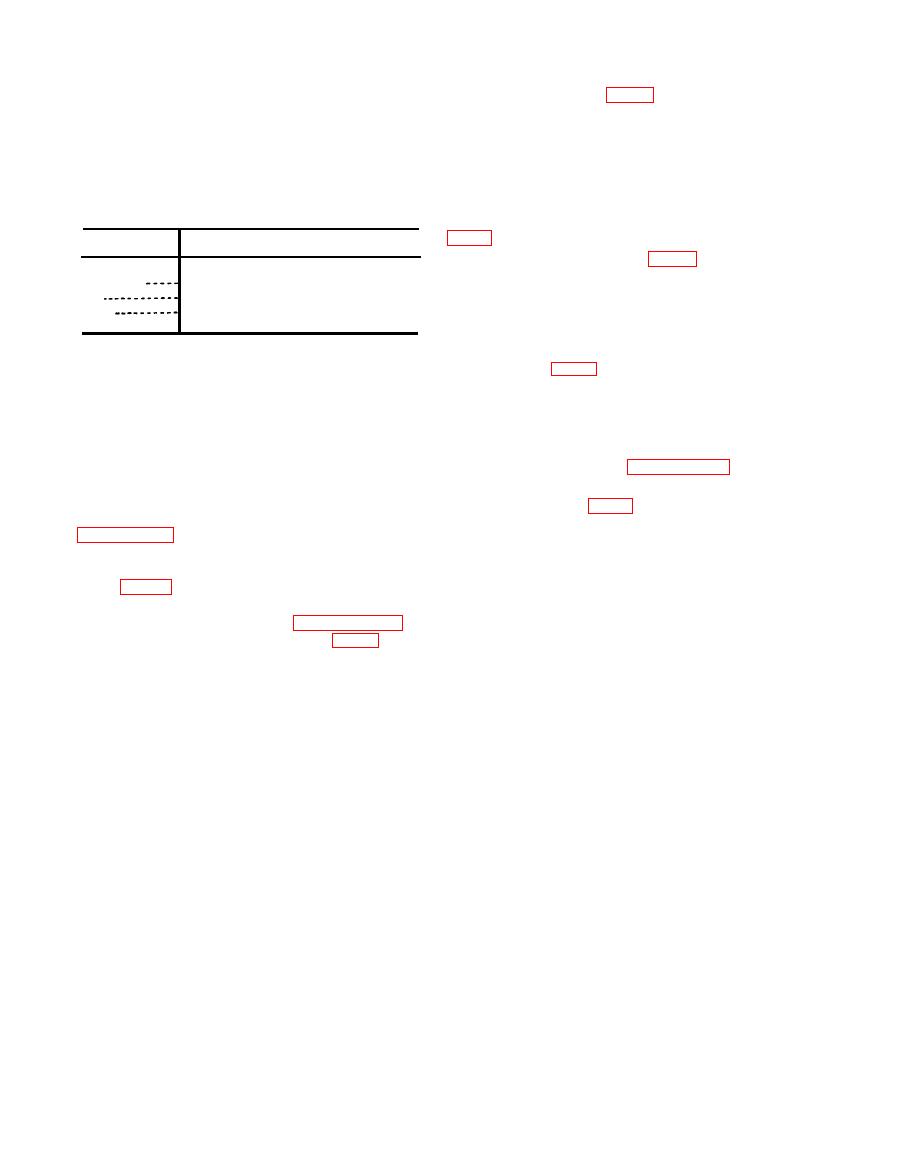
b. Secondary Clutch (fig. 26). No parts need be
Transceiver TT-1(*)/TXC-1 under the lead screw
removed or any adjustments disturbed to clean
shaft.
the dog latch cam plate. Clean the cam plate
with a lint-free cloth dampened with solvent (SD).
S e t AN/TXC-1(*)
Any portion which cannot be reached easily can
The following chart lists the lubricating ma-
be cleaned by covering an orangewood stick with
terials necessary when servicing Facsimile Set
the dampened cloth. Dry thoroughly with a
AN/TXC-1(*).
lint-free cloth. Lubricate according to LO 11-2258
Standard
nomenclature
Symbol
motor worm and gear with a lint-free cloth damp-
PL Special
Oil, Lubricating, Preservative, Special.
ened with solvent (SD). Clean in between the
Grease, Aircraft and Instruments.
GL
teeth by covering an orangewood stick with the
OCW
Oil, Clock and Watch.
dampened cloth and running it between the teeth.
Dry with a lint-free cloth. Lubricate according
to LO 11-2258 (fig. 26). To perform this operation
Clean the parts thoroughly before applying
on Facsimile Sets AN/TXC-1B and -1C, first
lubricant. Be sure that the parts are free of dirt,
remove the gear case cover.
dust, corrosion, and old lubricants. The following
paragraph outline the methods, procedure, and
materials to be used when cleaning equipment
preparatory to lubrication. The instructions are
The lubricants listed in paragraph 45 may be
applicable in common to Facsimile Sets AN/TXC-
used in all temperature. The intervals listed in
1, -1A, -1B, -1C, and -1D unless otherwise noted.
the lubrication order (fig. 26) are based on 8-hour
For additional information on cleaning, refer to
normal daily use. When the equipment is used
more than 8 hours daily, or is used in tropical
nance.
climates, lubricate it more often. For example,
a. Lead Screw, Guide Rail, Drum Shaft, and Key-
if the equipment is in use 16 to 20 hours daily,
lubricate after each 3 hours of operation. The
cleaning and lubricating these items. Thoroughly
lubrication periods can be determined by frequent
clean the parts as outlined in paragraph 41e.
Lubricate as outlined in LO 11-2258 (fig. 26).
inspection of all lubrication points.
Section IV. WEATHERPROOFING
spray method of applying moistureproofing and
fungiproofing and the supplies and equipment
a. Genaral. When electronic equipment is
The following
required for this treatment.
operated under the severe climatic conditions
problems may be encountered:
which prevail in the tropical, arctic, or desert
regions, it requires special treatment and mainte-
(1) Resistors, capacitors, coils, chokes, trans-
nance. Fungus growths, insects, dust, corrosion,
former windings, etc., fail because of the
salt spray, excessive moisture, and extreme
effects of fungus growth and excessive
temperatures are harmful to most materials.
moisture.
b. Tropical Maintenance.
Because fungus
(2) Electrolytic action often visible in the
growth, insects, corrosion, salt spray, and excessive
form of corrosion takes place in resistors,
moisture affect most materials in a harmful
coils, chokes, transformer windings, etc.,
manner, a special moistureproofing and fungi-
and eventually causes breakdown.
proofing treatment is used and, if properly applied,
(3) Hook-up wire insulation and cable insula-
it provides a reasonable degree of protection.
tion break down. Fungus growth accel-
Refer to TB SIG 13 (Moistureproofing and Fungi-
erates deterioration.
proofing Signal Corps Equipment), and TB SIG 72
(4) Moisture forms electrical paths on ter-
(Tropical Maintenance of Ground Signal Equip-
minal boards and insulating strips, and
ment) for detailed descriptions of the varnish-
causes flashovers and cross talk.


